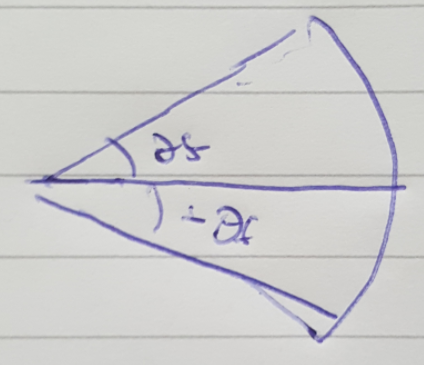Suppose a light source is kept from a mirror at a distance x from the topmost part of the mirror(*). As we take the distance of points that are more and more interior to the mirror, we find that the distance to it from the light source is increased from the topmost to the middlemost point, after which the distance drops off again. If we were to plot the time taken by light rays to reach the points as a function of angle $\theta$ where $\theta $ is the angle relative to a horizontal line that passes through the pole of the mirror. The graph would look something like this:
$ \theta_f$ being the maximum angle attainable:
Now, what are the consequence of light rays in a parallel beam taking a longer time to hit some spots on a mirror and less time to hit others?



